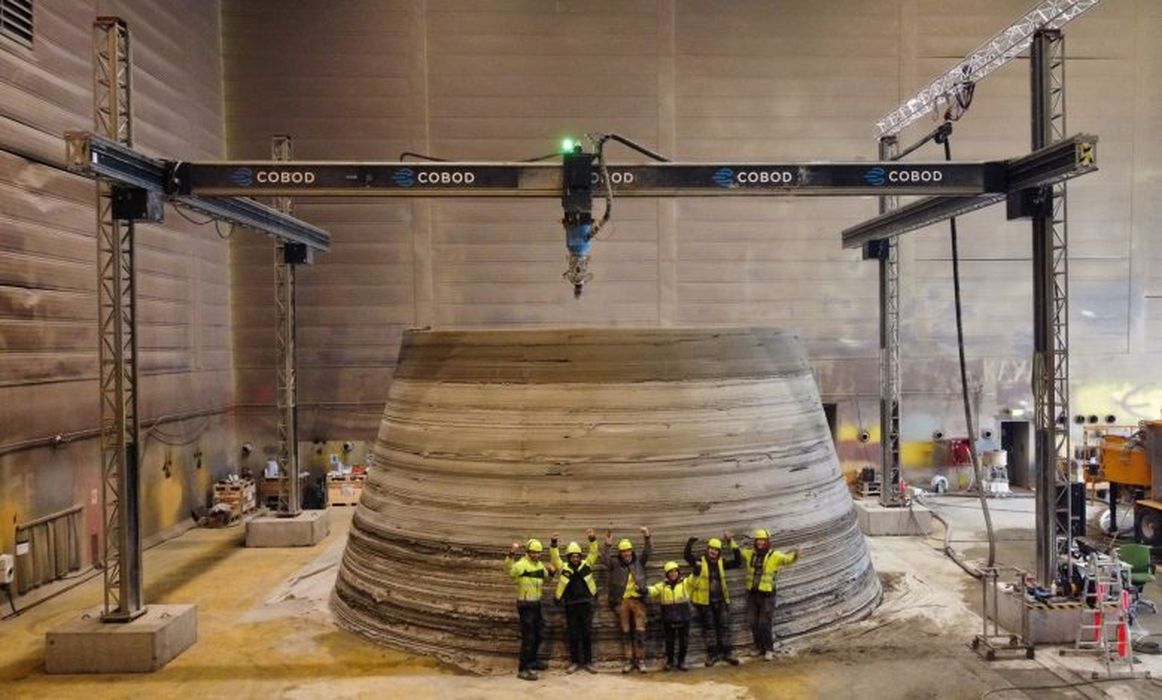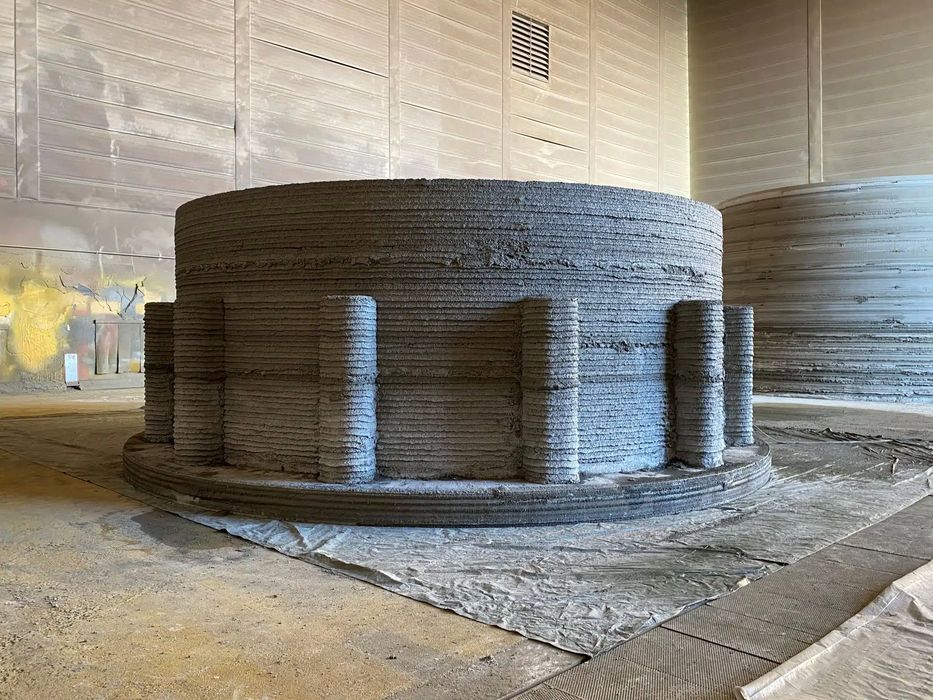
An exclusive interview with COBOD founder Henrik Lund-Nielsen about driving construction 3D printing innovation in infrastructures.
We had the chance to sit down with Henrik Lund-Nielsen, the founder of COBOD International, to chat about what has been going on at COBOD lately. Mr. Lund-Nielsen has also very kindly opened up about the upcoming plans for the company with respect to infrastructure 3D printing and other applications beyond housing. Read on to find out about COBOD’s exciting future.
Many people associate 3D construction printing technology with printing relatively small-scale housing, but the scope of applications goes far beyond just that. COBOD, the leading 3D construction printing hardware company in the world, has now recognized a growing demand for large-scale tanks used in water treatment facilities as well as biogas plants and has therefore started making the tanks by using their printing technology.
A lot has happened at COBOD lately, so we took the chance to sit down with the company’s founder Henrik Lund-Nielsen, who gave us further insight into what they’re doing now, and his vision for the upcoming future at COBOD and in the global concrete 3D printing segment.
COBOD has been present in the 3D construction printing industry for quite a few years now. Back in 2017, they printed Europe’s first 3D printed building, named “BOD”, which gave the company quite a bit of media exposure.
Going large

Ever since the ”BOD” project, COBOD has been growing at a fast pace, undertaking more challenging projects as time went by. Backed by GE Renewable Energy, PERI Group, Holcim, and Cemex, who acquired a smaller stake in the company, COBOD managed to become a leading company in what is a still small sector of 3D construction printing.
“Where the construction printing technology can have the biggest bang for the buck is not within housing because there are so many costs in housing projects, which we can’t touch”, Lund-Nielsen said when explaining why COBOD has focused on applications besides just housing.
Utilizing COBOD’s technology in projects where reinforced concrete is a much larger part of the total cost of the project will drive the cost reductions even higher. “So that’s why we started looking for these industrial applications that are much rawer, like industrial warehouses, wind turbine towers and tanks” Lund-Nielsen explained.
Currently, the most efficient and cost-effective way to utilize COBOD’s 3D construction printing technology is by printing reinforced concrete structures which can be made faster and cheaper by printing.
COBOD has the edge over its competitors when it comes to the ability to print tall, large-scale industrial structures. “This is something that our printers are really good at. We know a lot about it because of our windmill experience with GE”, Lund-Nielsen said, alluding to the experience COBOD has gained in making large-scale concrete bases for wind turbines for GE.
Regarding similar large-scale applications, COBOD is currently focusing on printing biogas tanks, as well as tanks and parts for the water infrastructure. Lund-Nielsen especially believes in the biogas industry, claiming it to be a booming market in the European Union and the US. “Alone the EU is estimating the number of biogas plants to double by 2030, which would require 20.000 new facilities with more than 100.000 new tanks”, he added.

The future for biogas is looking bright, especially in this day and age where being independent of fossil Russian gas, when it comes to energy sources, is hugely important.
Biogas can be used as a replacement for this gas and function as a fuel, or as a source of heat and/or electricity. It’s usually produced from manure via a process called anaerobic digestion. What that means is that while the manure is being disintegrated by various microorganisms in absence of oxygen, biogas is being created. When CO2 is extracted from biogas, you’re left with biomethane, which is as useful as gas as fossil gas and can be distributed in the gas distribution network, which many countries have established for the fossil gas.
When asked about more specific information on the printed tanks for the biogas industry, Lund-Nielsen replied: “There are a few large suppliers of steel tanks used in the stage of processing the manure. These tanks need to be narrow and tall because if they’re wide, it’s difficult to turn the manure around. Because of the height limitations of conventional concrete elements, those tanks are made of expensive steel today, while we can print these taller tanks with more economical concrete. We can also produce wide tanks which are used for pre-treatment and after-treatment phases of manure processing during biogas production.”
Concrete tanks are a perfect solution for both biogas and water infrastructure purposes since the pressure of the content of the tanks gets very high, and concrete can withstand it easily. This is why large-scale polymer printing can’t stand a chance against concrete in these specific applications.
Apart from the mentioned biogas tanks and water infrastructure, COBOD also has its eye on industrial warehouses and bridges, “because if you look at industrial warehouses and bridges, they’re also quite raw simple structures of reinforced concrete”, Lund-Nielsen says.
This clearly shows that Henrik Lund-Nielsen believes that the current best use cases for 3D construction technology are within simpler reinforced concrete shapes since the biggest cost-cutting could be achieved there.
Read the rest of this story at VoxelMatters
